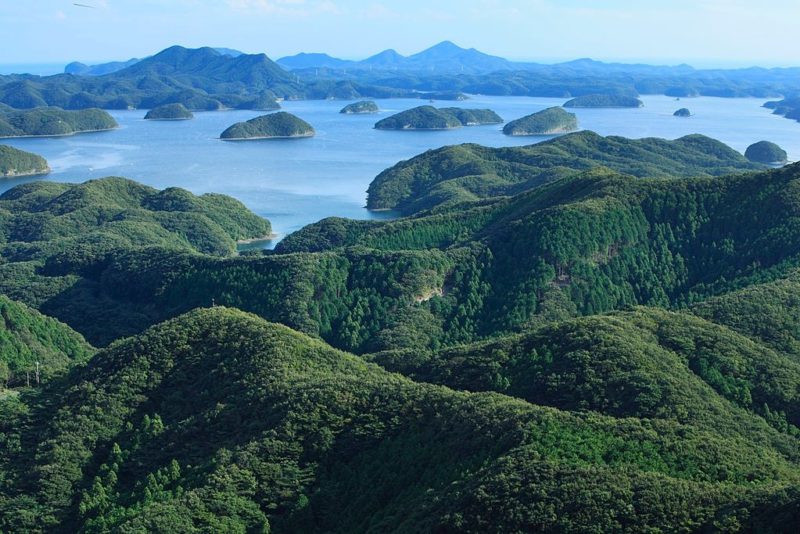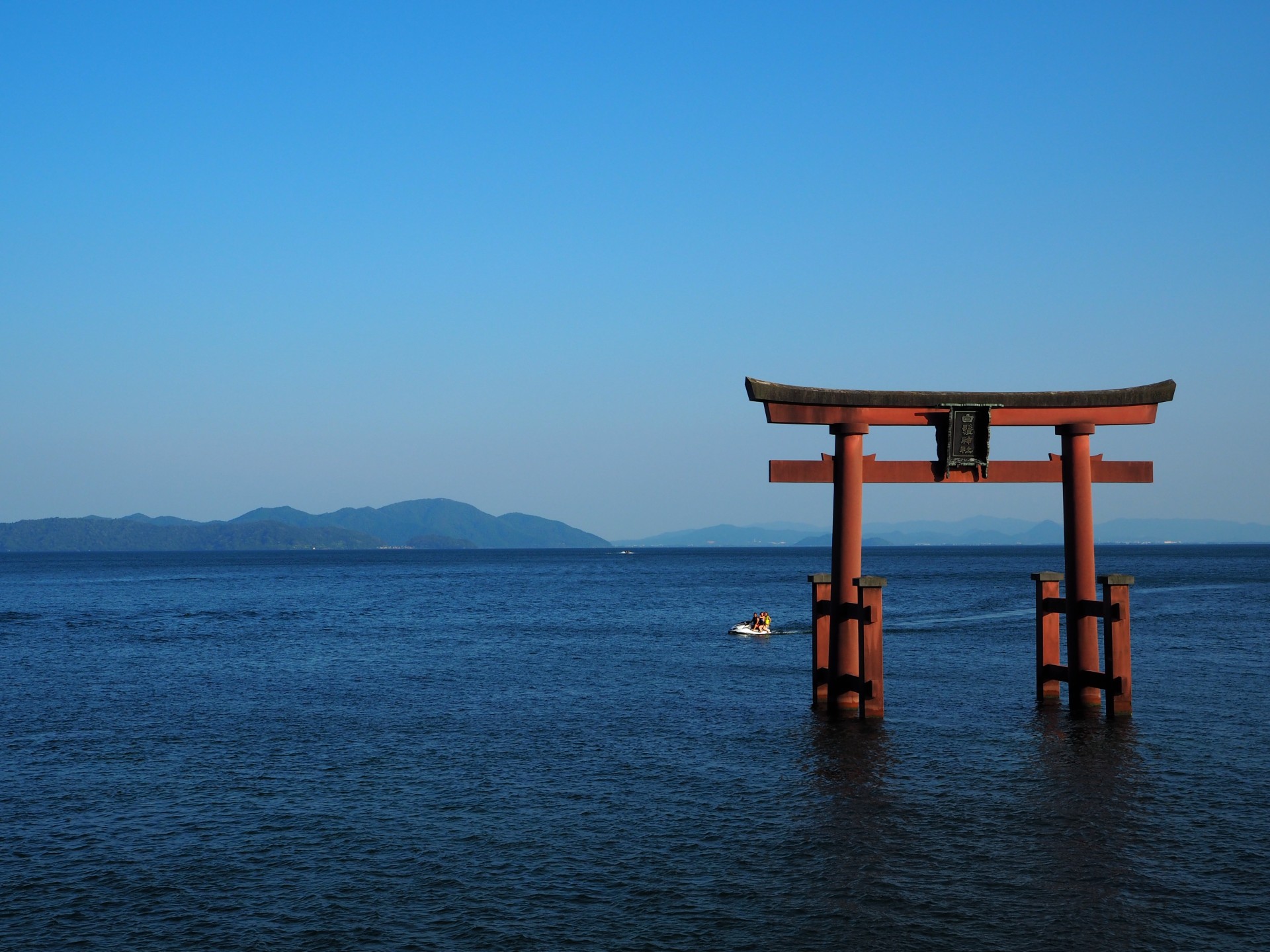Table of Contents
Move over Ishigaki Island and say hello to the beautiful Tsushima Island for a getaway like no other.
Tsushima Island has remained relatively under the radar up until the launch of the much-acclaimed 2020 action-adventure game Ghost of Tsushima. The game takes you through the island’s ancient shrines, idyllic pastures, and impressive ocean views to avenge the sins of a fallen samurai. Keep reading to see Tsushima’s incredible views for yourself as you scroll through our explorer’s guide to Tsushima.
About Tsushima Island
While widely referred to as “Tsushima Island”, Tsushima is actually an archipelago made up of over 100 smaller islands, all situated halfway between Kyushu and the Korean Peninsula. The archipelago is the closest Japanese territory to the Korean Peninsula. In fact, Tsushima is closer to Korea’s Busan than to mainland Japan!
Unfortunately, Tsushima’s past is steeped in historical dispute. From the Mongol invasions of Japan in the Edo period to, more recently, South Korea’s relinquished claims on the island, Tsushima has undergone many turbulent events throughout history. Presently, Tsushima is part of Nagasaki Prefecture in Japan and is a popular holiday destination for many South Korean tourists who come to explore the island’s lush flora and fauna.
Ghost of Tsushima: Fact or fiction?
Suker Punch Productions’ 2020 action-adventure game, Ghost of Tsushima, follows the last samurai on Tsushima Island during the first Mongol invasion of Japan in 1274. While the game centers around real historical events, most of the plot and characters are entirely fictional.
Apart from borrowing from the island’s history, Ghost of Tsushima showcases some of Tsushima’s breathtaking sights through its visual cutaways and fight sequences. In this guide, we cover some of these in-game locations in addition to Tsushima’s delicious delicacies, historical attractions, and pristine beaches. Read on to find out more!
How to get there
By plane
Flights to Tsushima are available from Nagasaki Airport and Fukuoka Aiport.
By ferry
You may choose between two ferry rides from Hakata Ferry Terminal in Fukuoka to reach the main Tsushima Island. Alternatively, ferries operate from Busan, South Korea.
Getting around
The best way to get around the island is by rental car. You will need to have a valid Japanese driver’s license or an International Driving Permit (IDP) if you plan on renting a car. Buses are also available around the main island, although routes are limited and do not cover most tourist sites. Taxis and bike rentals are available as well.
You can visit the city’s page for more information about transportation in Tsushima.
A nature lover’s escape
With 90 percent of the island covered in untouched mountainous forests, Tsushima is a nature explorer’s dream.
Trek your way through the numerous hiking trails that weave through primeval forests and experience the grandeur of the island’s spectacular scenery. The island’s flora and fauna are also worth keeping an eye out for; see a multitude of migrating bird species and immerse yourself in evergreen forests. We recommend renting a bicycle to see the best sights that Tsushima has to offer.
Tsushima Wildlife Conservation Center
Tsushima Wildlife Conservation Center, located in Saozaki Park, is a center dedicated to protecting the endangered Tsushima leopard cat. Due to habitat loss and infectious diseases, these wildcats have rapidly declined throughout the years. The center serves to preserve and protect the cats from extinction.
These cats are currently captively-bred at the center. Visitors can come to see them playing and feeding in their enclosures. In addition, the center is also free to the public and offers various educational exhibitions on Tsushima’s complex biodiversity.
Address: 2956-5 Kamiagatamachi Sago, Tsushima, Nagasaki 817-1603, Japan
Mt. Joyama
Take a leisurely hike through Mt. Joyama, a 276-meter-high mountain situated in Tsushima’s Aso Bay. Mt. Joyama, or “castle mountain”, gets its name from the 7th-century ruins of the Kaneda Castle located along the trail up to its peak. Though the impressive Kaneda Castle has been reduced to ruins on this mountain trail, game designers have fully recreated this fortress in Ghost of Tsushima, setting the castle at the center stage of its story.
Apart from the area’s rich history, Mt. Joyama is also home to rare plant species that you can see along the route to its summit. Speaking of the summit, the star of the show is the view from Mt. Joyama’s peak: panoramic vistas of the surrounding islands set in the shimmering blue ocean. You can even see South Korea in the distance on a sunny and clear day! The entire route is about 2.6 kilometers long and will take you 50 minutes to reach the top.
Address: Mitsushimamachi Kurose, Tsushima, Nagasaki 817-0512, Japan
Miuda Beach
Chosen as one of Japan’s top 100 most beautiful beaches, Miuda Beach is a natural white sand beach that overlooks emerald waters. Camping on Miuda Beach is a favorite activity among the locals as several campsites with permanent tents are open during peak season. Camping equipment is also available for rent.
Address: Kamitsushimamachi Nishidomari, Tsushima, Nagasaki 817-1703, Japan
Komoda Beach
Apart from Miuda Beach, Tsushima has several other beaches scattered across the island, including the historic Komoda Beach. Komoda Beach was one of the first locations that the Mongols attacked during their Japan invasion in 1274. 30,000 Mongol soldiers and 900 warships swarmed the beach during this intense battle. The Komodahama Shrine, which was built to memorialize this event, is located just beside the beach.
Komoda Beach also sets the scene for the gripping battle sequence of the Battle of Komoda Beach in Ghost of Tsushima.
Address: Izuharamachi Kunehama, Tsushima, Nagasaki 817-0244, Japan
A history buff’s haven
Many historical events have transpired on the islands of Tsushima. Today, the islands are a cultural and historical treasure trove that reflects Tsushima’s past legacy.
Keneishi Castle Grounds
Once a grand castle expanse, Keneishi Castle housed Tsushima’s feudal lords in the Edo era. Though the main castle has fallen, the entrance gate and its surrounding gardens have been preserved and designated as a national historic site. Relieve the past as you stroll through these castle grounds framed by the backdrop of lofty mountainscapes.
Address: 200 西里 厳原町 Tsushima, Nagasaki 817-0015, Japan
Watasumi Shrine
The picturesque and serene Watasumi Shrine is undoubtedly one of Tsushima’s most iconic spots. This Shinto shrine is dedicated to the sea god Watasumi. It features five tori gates that lead into the water. Depending on the time of the day, the tide can appear to swallow and submerge these tori gates, a spectacle that you must see for yourself.
Address: 55 Toyotamamachi Nii, Tsushima, Nagasaki 817-1201, Japan
A foodie’s dream
Tsushima’s cuisine is a unique blend of fresh seafood and abundant mountain produce. From succulent burger patties to bouncy soba noodles, Tsushima is the ultimate food lover’s playground.
Rokube noodles
A must-eat on Tsushima Island, the bouncy Rokube noodles are made with sweet potato starch and served in a salty-sweet broth. Sweet potatoes have always been a valuable source of food for the inhabitants of Tsushima. In order to preserve this precious food source, starch is extracted from the sweet potato by soaking it in water, forming the main ingredient of the delectable Rokube noodles you see today.
Try it here: Find authentic Rokube noodles at Tsushima Takumi, an establishment that makes their very own Rokube and soba noodles. Feast on a ready-to-eat bowl of Rokube noodles or bring home your very own noodle set to make this dish at home.
Tsushima burger
Sink your teeth into the succulent Tsushima burger, a must-try on the island of Tsushima. The burger’s patty is made with a combination of beef, squid, and the Japanese sea vegetable hijiki, giving it a unique blend of surf and turf flavors.
Try it here: Kiyo is a popular burger joint that serves some of the best Tsushima burgers on the island. The burgers are made in-house and are the perfect balance of bread, sauce, and patty. You can’t help going back for sloppy seconds as the burgers are absolutely delicious!
Taishu soba
Did you know that buckwheat soba may have originated from Tsushima? Some believe that soba noodles, evolved from the local specialty of Taishu soba, was introduced to the Tsushima Islands through the Korean Peninsula from China over 2,500 years ago.
Taishu soba is made from locally-grown buckwheat, giving it a distinctive slight bitterness. These unique noodles strike the perfect balance with their bouncy texture and distinct flavors, a definite must-have when visiting the island.
Try it here: Yamazato no Yado Ryota Saito is a homely farmhouse inn that serves handmade Taishu soba made using the buckwheat they grow, cultivate, and harvest. They also offer Taishu soba-making lessons!
About TourHero
TourHero is a social travel platform that enables you to travel with like-minded people and fall in love with the journey. We work closely with handpicked local operators to ensure every experience curated is unique and exclusive to your travel group. Come with us on epic adventures and create memories that last a lifetime!








